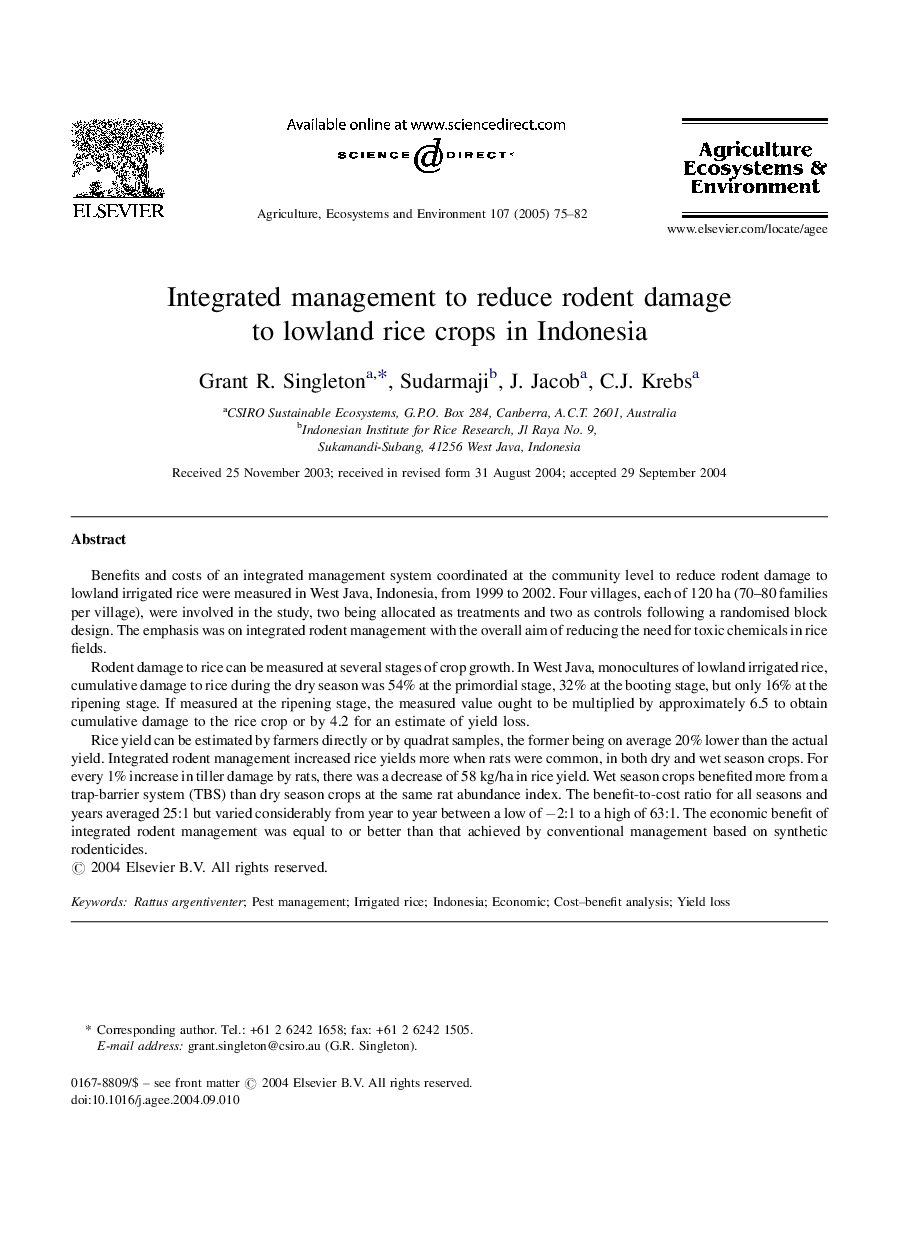| Article ID | Journal | Published Year | Pages | File Type |
|---|---|---|---|---|
| 8970939 | Agriculture, Ecosystems & Environment | 2005 | 8 Pages |
Abstract
Rice yield can be estimated by farmers directly or by quadrat samples, the former being on average 20% lower than the actual yield. Integrated rodent management increased rice yields more when rats were common, in both dry and wet season crops. For every 1% increase in tiller damage by rats, there was a decrease of 58Â kg/ha in rice yield. Wet season crops benefited more from a trap-barrier system (TBS) than dry season crops at the same rat abundance index. The benefit-to-cost ratio for all seasons and years averaged 25:1 but varied considerably from year to year between a low of â2:1 to a high of 63:1. The economic benefit of integrated rodent management was equal to or better than that achieved by conventional management based on synthetic rodenticides.
Keywords
Related Topics
Life Sciences
Agricultural and Biological Sciences
Agronomy and Crop Science
Authors
Grant R. Singleton, Sudarmaji Sudarmaji, J. Jacob, C.J. Krebs,
